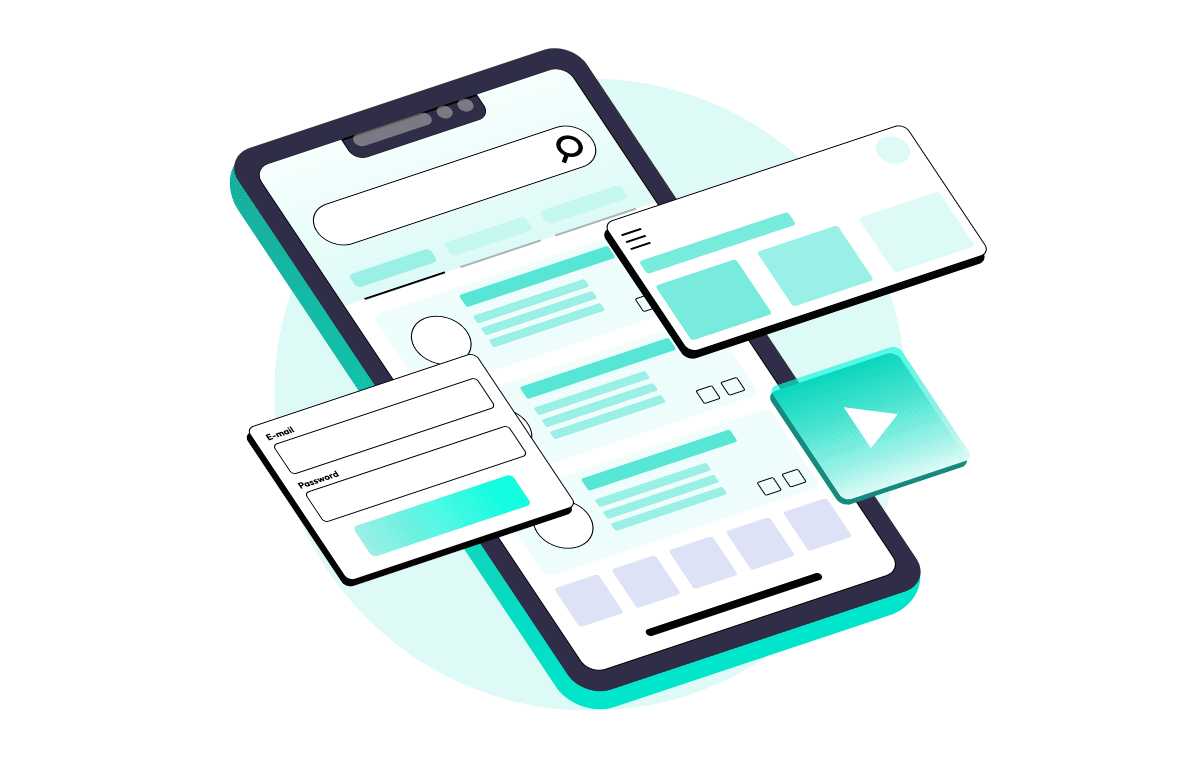Updated Oct 29, 2024 13 min read
Playwright End to End Testing: Complete Guide
This guide dives into using Playwright for end-to-end testing of web applications, highlighting its capabilities in browser automation and dynamic web testing. Developed by Microsoft, Playwright supports multiple programming languages and browsers, focusing on user interaction simulation and efficient testing practices. The article covers setup, test writing, and execution, emphasizing best practices and integration into CI/CD pipelines. It provides essential insights for developers and testers aiming to implement reliable end-to-end tests with Playwright, addressing common challenges and solutions.

Playwright, developed by Microsoft, is an open-source framework for automating the testing of web applications. It allows you to use JavaScript, TypeScript, Python, C#, and Java to test scripts that automate web browser actions. This universal framework supports different browsers in both headless and traditional modes. Its capabilities include user interaction simulation, screenshot generation, PDF generation, and network activity monitoring, making it ideal for comprehensive web app testing services. According to npm, Inc., Playwright has more than three million weekly downloads, indicating its growing popularity.
The choice between manual and automated end to end software testing depends on the project's stage and specific requirements. Manual testing is best for early-stage projects, UI and UX testing, or applications that change frequently. In contrast, automated testing suits stable applications, regression testing, and projects that value speed and efficiency. The optimal approach often combines manual and automated testing, combining their strengths to achieve full coverage, simplified testing, and improved user experience.
Overview of E2E Testing
E2E testing ensures the application's functionality and performance from the user's perspective, covering the entire process from start to finish. This is a comprehensive testing strategy instead of the focused unit or integration testing approach. The effectiveness of this method lies in its ability to replicate real-world usage, ensuring that the program works properly in practical scenarios.
The choice between manual and automated E2E testing depends on the project's stage and specific requirements. Manual testing is best for early-stage projects, UI and UX testing, or applications that change frequently. In contrast, automated testing suits stable applications, regression testing, and projects that value speed and efficiency. The optimal approach often combines manual and automated testing, combining their strengths to achieve full coverage, simplified testing, and improved user experience.
More Details about End to End Testing with Playwright
Playwright is a modern automation library designed to test web applications across all major browsers with a single API. Microsoft develops it and aims to improve the end to end testing experience by providing developers and testers with a powerful toolset for writing reliable, fast, and robust tests. Playwright allows for the simulation of real-world user scenarios, capturing what end users experience when interacting with web applications.
Here's a brief overview highlighting end to end testing with Playwright:
Cross-browser Testing | Supports testing across multiple browsers using the same API, ensuring consistent behavior across Chrome, Firefox, Safari. |
|---|---|
Auto-wait | Automatically waits for elements to be ready before executing actions, reducing flakiness and eliminating the need for manual sleep or wait commands. |
Backend Integration Testing | It provides built-in capabilities for making backend requests and testing the results, crucial for validating end to end testing Playwright scenarios and ensuring backend and frontend integration. |
Network Interception | Allows intercepting and modifying network requests and responses, enabling testing of offline scenarios, performance testing, and more. |
Rich Set of APIs | It offers a comprehensive API for browser automation, including, but not limited to, navigation, input, file uploads, and downloads. |
Multi-context Testing | Supports testing in multiple browser contexts simultaneously, facilitating tests that involve multiple users or sessions. |
Visual Regression Testing | Integrates with tools like Playwright Test or third-party services for snapshot testing, helping catch visual regressions. |
End to end testing Playwright scenarios offer a seamless testing experience that mirrors real user interactions. Its ability to handle the complexities of modern web applications, including single-page applications (SPAs) and dynamic content, makes it an invaluable tool for ensuring the quality and performance of web applications before they reach the end user.
Getting Started with Playwright
In this section, we'll walk through the initial steps of end to end testing with Playwright.
Installing and Setting Up Playwright
Initializing Playwright:

When you run the install command, you'll be prompted to make several selections to tailor the setup to your preferences:
- Choose between TypeScript or JavaScript (the default is TypeScript).
- Name your Tests folder (default is "tests" or "e2e" if you already have a tests folder in your project).
- Add a GitHub Actions workflow to run tests on CI easily.
- Opt to install Playwright browsers (default is true).
Project Setup: With Playwright installed, the next step is to set up your testing environment. Create a new test file (e.g., firstTest.spec.js) in your project directory.
Configuration: Playwright offers a configuration file (playwright.config.js) to tailor the testing environment to your needs. You can specify various options such as test directories, browser types, and whether to run tests in headless mode. For a basic setup, you can stick with the default configurations provided by Playwright.
Writing Your Playwright E2E Test
Initializing the Project: Start by importing Playwright in your test file:

Writing the Test Scenario: Define your test scenario within a test function. Use descriptive test names to indicate what your test is about.

Inside the test function, write commands to navigate a web page, interact with elements, and assert conditions. For example, to test a login feature, you might navigate to the login page, enter credentials, and verify that you're redirected to the dashboard.

Running the Test: To run your test, execute the following command in your terminal (this command runs all the tests in the tests folder of the project at once):

Playwright will launch the browsers in headless mode, execute your test, and provide a detailed execution report. You'll see whether the test passed or failed and any errors encountered during the test run.
By following these steps, you've embarked on your journey with Playwright. You've set up your environment, written your first e2e test Playwright, and run it across different browsers.

To broaden your understanding of frameworks for automated testing, delve into our article on the comparison of Playwright vs. Selenium.
Preparation Checklist for Playwright E2E Testing
Before jumping into end-to-end testing with Playwright, equip yourself with essential knowledge to ensure efficiency and effectiveness. Here's a concise, practical checklist:

Grasp E2E Testing Basics: Understand what E2E testing is, its importance, and how it fits into the testing pyramid alongside unit and integration tests.
Programming Language Proficiency: Be comfortable with one of Playwright's supported languages (JavaScript, TypeScript, Python, C#, Java), especially with syntax and basic programming constructs.
Web Tech Fundamentals: You must have a solid grounding in HTML, CSS, and JavaScript to interact confidently with web elements and the DOM.
Asynchronous Programming: Knowing how to handle asynchronous operations is crucial for managing the flow of test executions and interactions with the web.
CI/CD Introduction: Be aware of continuous integration and deployment principles to integrate testing seamlessly into development pipelines.
Familiarize with Playwright: Learn about Playwright's architecture, main features, and API to leverage its full potential for robust testing.
Setup Skills: Know how to set up your development environment for Playwright, including necessary installations and configurations.
Debugging Basics: Acquire basic debugging skills to quickly troubleshoot and fix issues in your tests.
Armed with this knowledge, you're ready to write efficient and reliable E2E tests with Playwright, confidently enhancing the quality of web applications.
Advanced Testing Techniques for End to End Testing with Playwright
Playwright offers advanced features that significantly enhance your end to end testing capabilities. This section will explore leveraging Playwright for sophisticated testing scenarios, including authentication testing, API testing, parallel test execution, and CI/CD integration.
Authentication and Session Testing
Authentication flows can be complex to test due to managing login states and session information. Playwright simplifies this by allowing testers to:
- Preserve Login State: Use Playwright's browser contexts to simulate login states. After performing a login action in a test, you can save the authentication state (cookies and local storage) and reuse it across tests to avoid logging in before each test.
- Automate Multi-Factor Authentication (MFA): For applications requiring MFA, Playwright can interact with email or SMS messages if accessible via web services, automating the entire login process.
API Testing
While Playwright is primarily designed for browser-based interactions, it can also facilitate API testing services by:
- Intercepting Network Requests: Validate API calls made by the application during tests by intercepting and inspecting HTTP requests and responses.
- Mocking API Responses: Mocking API responses improves test stability. It allows you to simulate various backend responses without relying on actual API calls.
Parallel Test Execution
Speed up test execution by running tests in parallel. Playwright Test Runner supports parallel execution out of the box, distributing tests across multiple workers:
- Configure Parallelism: Adjust the number of parallel workers in the ‘playwright.config.js’ file to optimize test execution time based on your CI/CD environment's capabilities.
- Isolate Tests: Ensure tests are independent to avoid conflicts when running simultaneously.
CI/CD Integration
Integrating Playwright tests into your Continuous Integration/Continuous Deployment (CI/CD) pipeline ensures that new code changes do not introduce regressions:
- Setup in CI Environments: Playwright can easily integrate with popular CI/CD systems like GitHub Actions, GitLab CI, Jenkins, and others. Use Playwright's CLI to run tests as part of your build process.
- Automate Deployment Decisions: Configure your CI/CD pipeline to proceed with deployments based on test outcomes, automating the decision-making process for releasing new builds.
By mastering these advanced techniques, you can leverage Playwright to its full potential, ensuring your web applications are thoroughly tested across a wide range of scenarios, from user interactions to backend integrations. This will enhance the quality and reliability of your software delivery process.
Best Practices and Avoiding Common Pitfalls in End to End Testing with Playwright
Elevating the quality of your E2E tests bolsters the reliability of your web applications and streamlines your development workflow. Implementing best practices and sidestepping frequent mistakes are pivotal steps in harnessing Playwright's full potential for E2E testing. This section delves into professional guidelines and how to avoid common pitfalls, ensuring your testing process is efficient and effective.
Best Practices for Writing Efficient E2E Tests with Playwright
Leverage the Power of Playwright's API: Fully use Playwright's rich API for browser automation, including auto-wait features, selectors that capture elements in a state (e.g., button: visible), and handling various input types. These features reduce flakiness and increase the robustness of your tests.
Utilize Playwright Fixtures for Test Isolation: Playwright's test runner provides fixtures that help set up and tear down testing environments for each test, ensuring test independence and minimizing side effects.
Incorporate the Page Object Model (POM): Implementing POM enhances test maintainability by separating the page structure from the test logic. This design pattern allows for code reuse and simplifies the update process when UI changes.
Embrace Parallel Test Execution: Playwright supports parallel test execution out of the box. Configuring your test suite to run in parallel significantly reduces the execution time, making the feedback loop faster for developers.
Integrate with Continuous Integration/Continuous Deployment (CI/CD): Automating your E2E tests within CI/CD pipelines ensures that every code change is verified, helping to catch regressions early in the development cycle.
Diverse Programming Languages: It's not only permissible but often beneficial for the application and its E2E tests to employ different programming languages. This approach allows each domain to leverage specific language strengths — such as Java for backend development due to its robust ecosystem and JavaScript for E2E testing with Playwright, thanks to its native support and community-driven tools and libraries.
This strategy capitalizes on each language's unique advantages, optimizing development efficiency and testing effectiveness. By choosing the most suitable languages for different aspects of a project, teams can enhance code quality, maintainability, and the overall testing experience.
Avoiding Common Pitfalls in E2E Testing with Playwright
Avoid Over-Reliance on UI Tests: While E2E tests are crucial for simulating real-world user interactions, they should complement, not replace, unit and integration tests. A balanced testing pyramid reduces build times and improves test stability.
Manage Test Data Effectively: It is crucial to ensure tests are self-contained and do not depend on shared state or data. Playwright's capabilities can be utilized to create test-specific data setups and cleanups, ensuring a predictable testing environment.
Handle Dynamic Content Wisely: Web applications often contain dynamic content, which can lead to flaky tests. Use Playwright's features like ‘waitForSelector’ or dynamic selectors to interact with elements that might take time to appear.
Beware of Anti-Patterns: Common anti-patterns such as hard-coding delays (‘waitForTimeout’) instead of proper wait conditions can lead to brittle tests. Always prefer event-driven synchronization methods provided by Playwright.
Regularly Review and Refactor Tests: As your application evolves, so should your tests. Regularly review test suites for relevance, removing obsolete tests and refactoring existing ones to align with current application features and workflows.
By adhering to these best practices and avoiding common pitfalls, you can craft a Playwright E2E testing strategy that is robust, efficient, and aligned with your development goals and workflows. This approach ensures that your web applications are thoroughly tested, functionally reliable, and ready to deliver a seamless user experience.
Conclusions
In conclusion, Playwright end to end testing emerges as a cornerstone in the landscape of modern web application development, offering a bridge between the technical intricacies of coding and the real-world experiences of end-users. The practical guidance on how to perform end to end testing using Playwright, coupled with insights into both manual and automated testing strategies, underscores the versatility and efficacy of Playwright in addressing the diverse needs of the testing community. To explore how Playwright can elevate your project's testing strategy to the next level, don't hesitate to contact us!
Comments
There are no comments yet. Be the first one to share your opinion!
For 8 years, we have helped more than 200+ companies to create a really high-quality product for the needs of customers.
- Quick Start
- Free Trial
- Top-Notch Technologies
- Hire One - Get A Full Team
Was this article helpful to you?
Looking for reliable Software Testing company?
Let's make a quality product! Tell us about your project, and we will prepare an individual solution.
FAQ
Playwright integrates well with CI/CD pipelines, offering fast headless browser testing, parallel test execution, and detailed reporting. It also works with popular CI tools like Jenkins, CircleCI, and GitHub Actions, which helps automate testing as part of the development process.
Playwright offers cross-browser support, runs tests in both headless and headful modes, and provides advanced features like auto-wait, network interception, and multi-context testing. These capabilities make it a powerful tool for simulating real-world user interactions and ensuring application quality.
Playwright supports testing applications written in any language, as it interacts with web applications through browsers. The test scripts can be written in JavaScript, TypeScript, Python, C#, and Java.
Playwright automatically waits for elements to be ready before performing actions, which reduces flakiness and improves test reliability when dealing with dynamic content.
Absolutely. Playwright’s support for parallel testing, robust cross-browser functionality, and ability to handle complex workflows make it suitable for large-scale projects. It scales efficiently and can handle the needs of enterprise-level applications that require extensive testing across browsers and environments.




